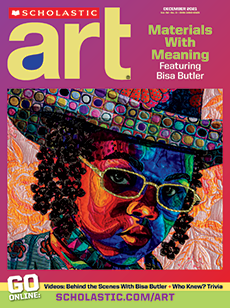Before Damián Ortega (dah-mee- AHN or-TEH-gah) became a world-renowned artist, he drew cartoons about politics for newspapers and magazines in Mexico City, his hometown. He greatly admired famous muralists like Diego Rivera and dreamed of becoming a fine artist too.
Ortega, who was born in 1967, never attended a formal art school. Instead, he studied with Mexican artist Gabriel Orozco. During the 1980s and ’90s, Orozco taught a workshop about making art in new and unexpected ways, a mindset that Ortega embraced early in his career and continues to employ today.
Artist Damián Ortega (dah-mee-AHN or-TEH-gah) is from Mexico City. At first, he drew cartoons. He admired muralists like Diego Rivera and wanted to be one too.
Ortega was born in 1967. He studied with Mexican artist Gabriel Orozco. In the 1980s and ’90s, Orozco taught about making art in unexpected ways. Ortega has embraced this idea in his work.
